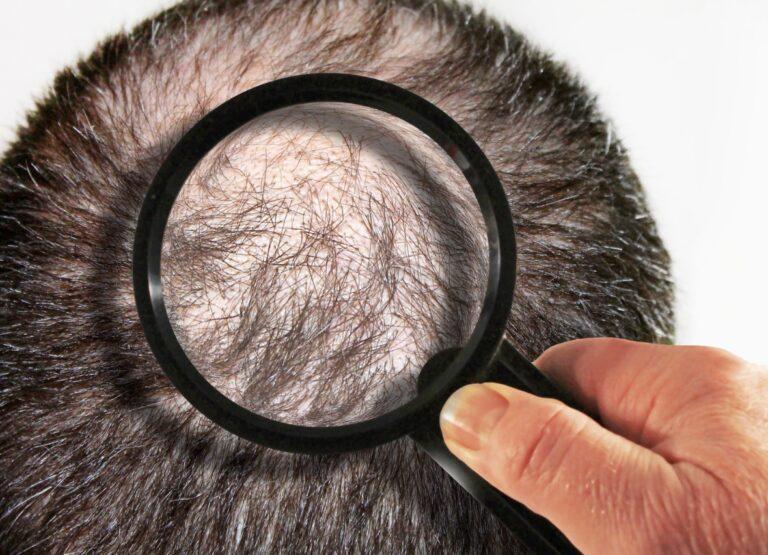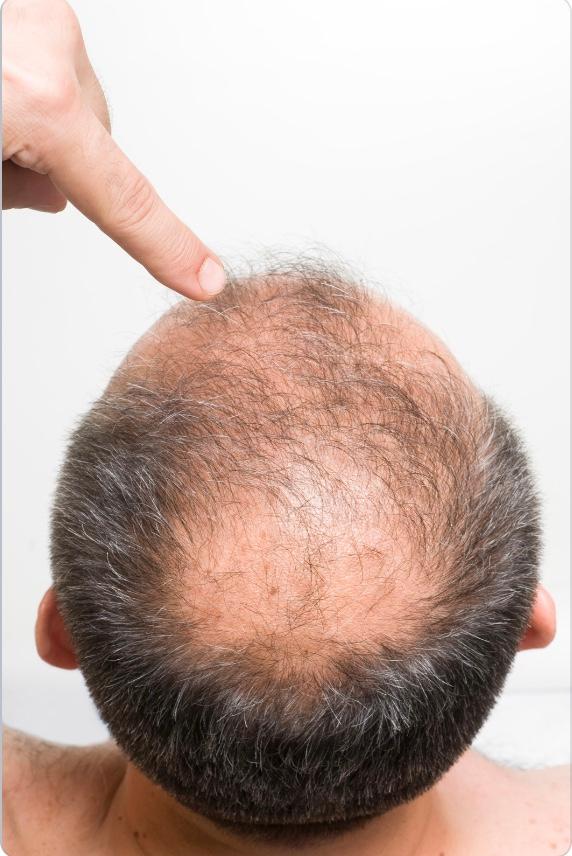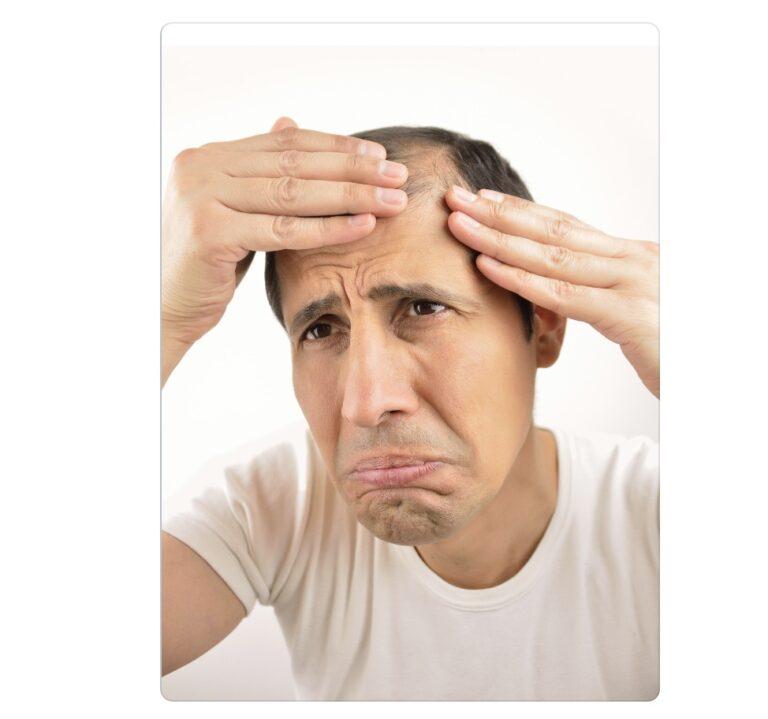You’ve noticed a few more hairs blocking the shower. There’s been a couple of strays on your pillow and now you’re starting to panic. You’re already thinking about a comb-over or going full-on Statham. Slow down.
Losing hair is normal. Old hairs naturally fall out to make way for new ones. But if you are losing more hair than it is being replaced, that’s when you may be experiencing male pattern baldness.
So, how can you tell if your hair loss is normal?
How much hair loss is normal in a day?
On average, people lose around 50 to 100 hairs a day. That might sound like a lot, especially if you’re picturing 100 hairs clogging up your shower every day, but it actually isn’t too much.
People usually have around 100,000 to 150,000 hairs on their head, so losing 100 hairs a day is at most 0.10% of your hair. And this type of hair loss doesn’t make you go bald either, as it’s all part of the natural growth cycle of hair.
How much hair loss is normal in the shower?
Of the 50 to 100 hairs you lose on average per day, you tend to lose more of these when you’re touching your hair. If you style your hair, use combs and brushes, and wash your hair in the shower, you may remove the majority of the old hairs that have reached the end of their growth cycle. So don’t be surprised to see a fair amount of hair on the bottom of the shower.
Your hair’s natural growth cycle
The hair on your body undergoes a continuous growth cycle, which has four stages:
Stage 1: Growth (anagen phase). A hair follicle (the holes in your skin that hair grows out of) produces a new hair. This strand of hair grows thicker and longer until it reaches its full length.
Stage 2: Regression (catagen phase). The strand of hair detaches from the follicle. It stays attached to the skin, but it stops growing.
Stage 3: Resting (telogen phase). A new strand of hair starts to grow from the follicle beneath the older hair that’s just detached from it.
Stage 4: Shedding (exogen phase). The old hair breaks away from the skin and falls out. The new hair beneath it begins to emerge, and we’re back to stage 1.
So you can see that normal hair loss (stage 4), called shedding, doesn’t make you go bald, as a new hair emerges from the follicle and grows to take its place.
Why is so much of my hair falling out?
The main cause of hair loss in men is male pattern baldness. This usually causes hair to thin and recede over time though, as hairs stop being replaced when they fall out. If you’re experiencing rapid hair loss, then you may have a medical condition which is causing it, and you should speak to a doctor as soon as you can.
What is male pattern baldness?
There are lots of things that can make your hair fall out, like illnesses, bad nutrition, stress, drugs, and medical treatments. This type of hair loss is usually temporary, however, meaning hair returns once the cause is dealt with. When people talk about baldness, they’re usually not talking about these types of hair loss, they’re talking about something more permanent. Male pattern baldness (MPB), also called androgenetic alopecia, is the most common type of baldness, affecting up to 80% of men at some point in our lives. It’s different from shedding, as it’s caused by hair follicles shrinking over time. As the follicles shrink the hairs growing out of them become progressively thinner and shorter. Eventually, the follicle shrinks so much, that when an old hair falls out, a new hair can’t emerge at all.
So MPB is different from shedding, as eventually, no new hairs replace the ones that are lost.
How do I tell if I’m shedding hair or if I have male pattern baldness?
The clue is in the name. It’s called male pattern baldness, as the hair loss usually follows a typical pattern. Thinning and hair loss happens in specific areas, rather than evenly all over your head.
With MPB, the follicles usually begin to shrink first along your hairline, particularly at the corners, and on the crown of your head (towards the back of the top of your head). As hair thins and recedes at the corners of your hairline, it can create an M-shape, where you have a peak in the middle and losses at the sides. As hair thins and is lost on your crown, your scalp begins to show through your hair.
So if you notice your hair thinning in these areas rather than even hair loss, it’s probably not normal hair shedding and is MPB. Read more about the causes and stages of MPB.
Also, MPB is partly genetic. If other men in your family have it, you’re not guaranteed to get it too, but you are much more likely. If MPB runs in your family, you should pay particular attention to your hairline and your crown, as the faster you spot MPB, the easier it is to treat. Be vigilant.
How to treat male pattern baldness?
MPB used to be untreatable. There were loads of quack treatments, but nothing that reliably stopped hair loss, let alone reversed it. But thankfully, science has come to the rescue and there are a number of treatments for MPB today that actually work. And the best of these is finasteride.
Finasteride, also sold under the brand name Propecia, is a treatment for MPB. It’s taken as a pill and it works by reducing the amount of male hormone in the scalp which causes the follicles to shrink. It’s one of the few treatments for MPB that actually works. Finasteride has been found to stop hair loss in around 80% of men, and around 66% see their hair returning and thickening.
Remember, it’s normal to lose hair as it’s all part of the natural growth cycle. However, if you have MPB it isn’t part of the cycle and is something you need to tackle as soon as you spot the signs.
Sources
- Hair loss – NHS
- Finasteride: a review of its use in male pattern hair loss – PubMed
- Convert Case – Convert upper case to lower case, lower case to upper case and more
Medical Disclaimer
NowPatient has taken all reasonable steps to ensure that all material is factually accurate, complete, and current. However, the knowledge and experience of a qualified healthcare professional should always be sought after instead of using the information on this page. Before taking any drug, you should always speak to your doctor or another qualified healthcare provider.
The information provided here about medications is subject to change and is not meant to include all uses, precautions, warnings, directions, drug interactions, allergic reactions, or negative effects. The absence of warnings or other information for a particular medication does not imply that the medication or medication combination is appropriate for all patients or for all possible purposes.







